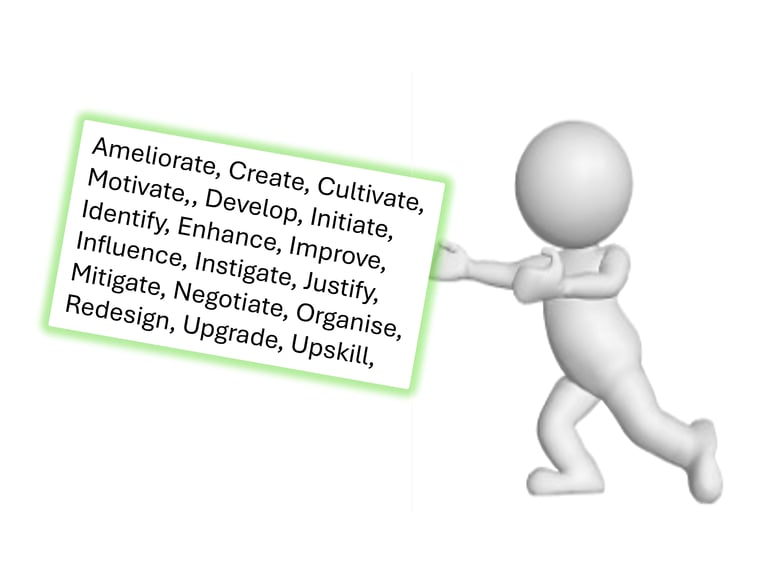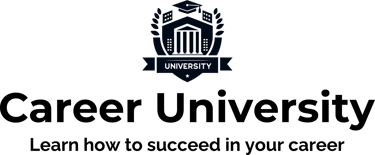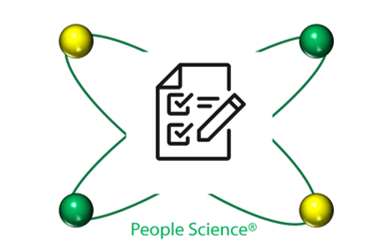CV Optimization
Enhance your CV to showcase your strengths and secure your dream job!
Streamline


Conclude your CV or Resumé at a point that cuts off irrelevant sections, jobs, or experiences that don't add value to your application.
Remove outdated or obsolete information (e.g., old job titles, skills, or education).
Simplify formatting and layout to make it easy for Applicant Tracking Systems (ATS) to scan.




Highlight
Identify the most important aspects of your career and experience (e.g., achievements, skills, education).
Prioritize the top 5-7 years of work experience and highlight accomplishments in those roles.
Emphasize transferable skills, such as communication, problem-solving, or leadership.
Focus
Use keywords and phrases from the job posting to describe your experiences and qualifications (e.g., "data-driven decision making" for a data analyst role).
Quantify achievements by using numbers and statistics (e.g., "Increased sales revenue by 45% in 6 months").
Highlight soft skills, such as emotional intelligence, teamwork, time management, or adaptability.
Download one of the templates below and get a rough sketch of your CV or Resumé going. Then follow the steps below to optimize your CV to meet the standards of hiring and talent teams as well as job screening tools like ATS.
What Next?








Before you start reorganizing your CV, define what you're looking for in a job. This will help you focus on the most relevant information and highlight your strengths. Then:
Review the entire CV or resumé to identify areas for improvement. Start by reviewing your current CV to identify what you like about it, what's missing, and what needs improvement.
Take note of the following:
What are the most important sections of your CV?
Are there any gaps or inconsistencies in your work history?
Are there any skills or qualifications that need highlighting?
Reorganize sections into logical groups (e.g., education, work experience, skills).
Ask friends, relatives, peers and mentors if the CV flows and is sequenced logically.
Review & Reorganise
Edit, Refine & Distil
Emphasise Achievements
Replace generic job descriptions with specific achievements and accomplishments.
Highlight promotions, awards, or recognition received in previous roles.
Focus on outcomes, not tasks: Highlight the results you achieved rather than just listing your responsibilities. For example, instead of "managed a team," say "led a team that improved project delivery time by 30%."
Emphasize soft skills: In addition to highlighting technical skills, emphasize soft skills like communication, teamwork, and problem-solving, which are valuable in most roles.
Prioritize achievements over responsibilities: If you have limited space, prioritize highlighting achievements over listing responsibilities.
Use bullet points to break up large blocks of text and make your achievements stand out. This also helps readers quickly scan your CV.
Use bullet-point headers: Use bold or italic font to separate sections of your CV and highlight specific achievements within those areas.
Edit each section to ensure clarity, concision, and relevance.
Remove any unnecessary words, phrases, or bullet points.
Review each section of your CV to ensure it's relevant and up-to-date.
Consider adding or removing sections, such as:
Volunteer work
Relevant coursework or certifications
Hobbies or interests (if they're relevant to the job you're applying for)
Choose a standard format for your CV, such as:
Chronological order (listing your work history in reverse chronological order)
Functional format (emphasizing skills and qualifications rather than dates of employment)
Combination format (using a mix of both chronology and functional formats)
Use numbers and statistics to demonstrate the impact of your work (e.g., "Supervised a team of 7 people" instead of just "supervised a team" or Instead of just stating "increased sales," say "boosted sales by 25%."
Emphasize skills and qualifications that align with the job requirements.
Highlight percentages or ratios: Use percentages or ratios to demonstrate the magnitude of your achievements.
"Reduced costs" becomes "Cut expenses by 20%, resulting in a 15% increase in profit margin."
"Increased productivity" becomes "Boosted output by 25%, with a 12-hour reduction in overall project duration."
Quantify the benefits of your achievements, such as:
"Improved customer satisfaction" becomes "Enhanced customer experience ratings by 18 points, resulting in a 10% increase in repeat business."
Emphasize skills and competencies: Showcase the skills and competencies you used to achieve the results, such as:
"Developed and implemented a marketing strategy" becomes "Utilized expertise in market research, campaign planning, and analytics to drive a 20% increase in brand awareness."
Quantify & Qualify


Use Action Verbs
Replace passive voice with active, descriptive verbs (e.g., "Developed" instead of "was responsible for developing").
Use verbs like "Designed," "Built," "Managed," or "Improved" to describe your experiences.
Select verbs that fit the job: Choose verbs that align with the job description and requirements.
Vary your verb choices: Use a mix of action verbs to add variety and interest to your CV.
Place action verbs at the beginning: Start each bullet point or sentence with an action verb, such as "Increased sales revenue by 25%," instead of "Sales revenue increased by 25%."
Use action verbs consistently: Apply a consistent approach to using action verbs throughout your CV.
Be specific about what you did: Use action verbs to describe the actions you took and the results you achieved, such as "Developed and implemented a marketing strategy that resulted in a 20% increase in brand awareness."
Avoid vague verbs: Steer clear of generic verbs like "responsible for" or "in charge of." Instead, opt for action-packed verbs that show what you did.


Proofread & Polish
Review the CV or resumé multiple times to catch any errors or inconsistencies.
Take breaks between readings to clear your mind and approach it with fresh eyes.
Use grammar and spell-check tools, such as Microsoft Word's built-in features or online proofreading software like Grammarly.
However, don't rely solely on these tools – they can sometimes miss errors.
So make sure to get feedback from friends, mentors, or career professionals to identify areas for improvement.
Verify that your CV is properly formatted, with consistent font styles, sizes, and spacing.
Make sure headings and subheadings are clear and easy to read.
Read each section (e.g., summary, education, work experience) separately to ensure accuracy and completeness.
Double-check dates, job titles, and company names for any errors.
Tailor the CV specifically each time you apply for a new job - this is a must and something every good career coach recommends.
Apply the 3-second rule: When reviewing each section, ask yourself: "Would I still understand this if I read it for only 3 seconds?"
Cover Letter
You didn’t come this far to stop!
Research & Understand the job
Read the job description carefully to understand the employer's needs and requirements.
Research the company culture, values, and mission to show your enthusiasm and fit.
Identify the key qualifications and skills mentioned in the job posting.
Start with a strong, attention-grabbing opening sentence that highlights your relevant experience or achievement.
Write a concise summary (around 3-4 sentences) that:
Restates the job title and position
Highlights your most relevant skills and
qualifications for the role
Shows your enthusiasm for the company and role
Demonstrate how you've applied relevant skills and experience in previous roles. Emphasize achievements like
Quantifiable results (e.g., "Increased sales by 25%")
Challenges overcome (e.g., "Successfully managed a team of X people through a period of high stress")
Skills developed or honed (e.g., "Improved my proficiency in [software/language] through online courses and projects")




